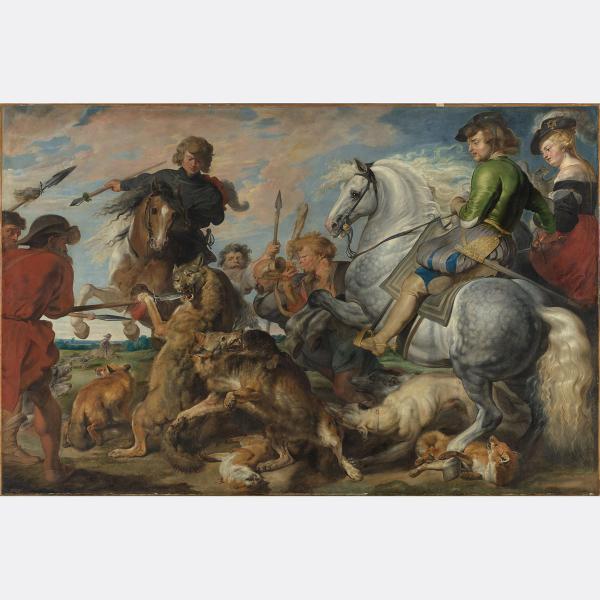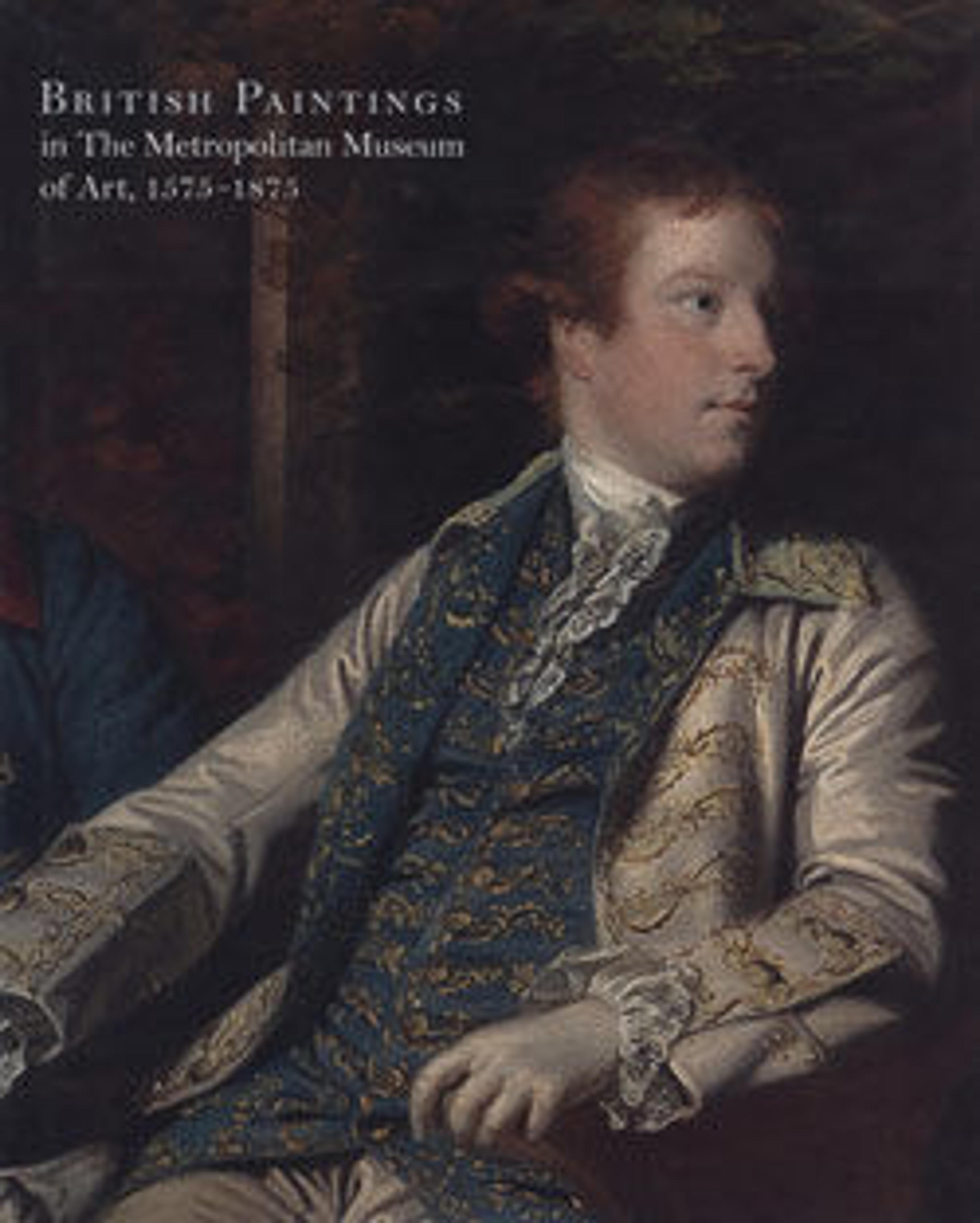Wolf and Fox Hunt
With characteristic business acumen, Rubens created a market for a new art form: very large hunting scenes painted on canvas, of which this one is the first. These monumental paintings took the place of tapestries, a significantly more expensive medium at the time. This canvas was originally even larger, before being trimmed to fit in a collector’s home. Rubens painted the picture with the help of assistants but declared that the wolves were his own work.
Artwork Details
- Title: Wolf and Fox Hunt
- Artist: Peter Paul Rubens (Flemish, Siegen 1577–1640 Antwerp) and Workshop
- Date: ca. 1616
- Medium: Oil on canvas
- Dimensions: 96 5/8 x 148 1/8 in. (245.4 x 376.2 cm)
- Classification: Paintings
- Credit Line: John Stewart Kennedy Fund, 1910
- Object Number: 10.73
- Curatorial Department: European Paintings
Audio

5026. Wolf and Fox Hunt
Peter Paul Rubens, 1616
BETHANY PASTORIAL: As an equestrian and horse [laughs] enthusiast, I did enjoy how courageous the horses appear. They look like they’re getting ready to do battle.
Hi, my name is Bethany Pastorial and I’m an equine photographer.
In photographs, your eye is drawn to the brightest spot of any image. And in this particular painting, the brightest spot is the gray horse on the right-hand side. That's the first thing that I looked at. And I don’t know that that’s necessarily because I love horses, so much as it seems to be the focal point of the painting, and that comes from the charisma that the horse is showing, the bravery that he’s showing.
You know, breeds are bred purposefully to do a certain job. And in this particular painting, they are performing their job. They are going into the hunt.
ADAM EAKER: It’s important to remember that hunting was an aristocratic prerogative.
NARRATOR: Associate Curator Adam Eaker.
ADAM EAKER: So if you were taking part in the hunt, that was a very important marker of status. And those who had that right, they liked to memorialize or commemorate that right in the art that they surrounded themselves with. And that’s one reason why hunting scenes were such a constant of European art from the Middle Ages really into the twentieth century.
NARRATOR: Before Rubens, viewers were more likely to encounter a massive hunting scene in a woven tapestry rather than in a painting.
ADAM EAKER: One thing that may surprise twenty-first-century viewers of this painting is that it actually would have represented a more affordable option compared to a tapestry. A tapestry on this scale could easily take a year to produce. So actually, having Rubens’ workshop produce a painting to take the place of a tapestry was an economical decision.
NARRATOR: Rubens was an innovator, creating an entirely new kind of painting. One that wealthy—but still cost-conscious buyers—might have wanted in their homes.
BETHANY PASTORIAL: The longer you look at this painting, the more interesting it becomes. And I think that’s what really draws somebody to want to own a piece, in that there’s a storytelling aspect to it. It is a whole story in one image.
More Artwork
Research Resources
The Met provides unparalleled resources for research and welcomes an international community of students and scholars. The Met's Open Access API is where creators and researchers can connect to the The Met collection. Open Access data and public domain images are available for unrestricted commercial and noncommercial use without permission or fee.
To request images under copyright and other restrictions, please use this Image Request form.
Feedback
We continue to research and examine historical and cultural context for objects in The Met collection. If you have comments or questions about this object record, please contact us using the form below. The Museum looks forward to receiving your comments.
